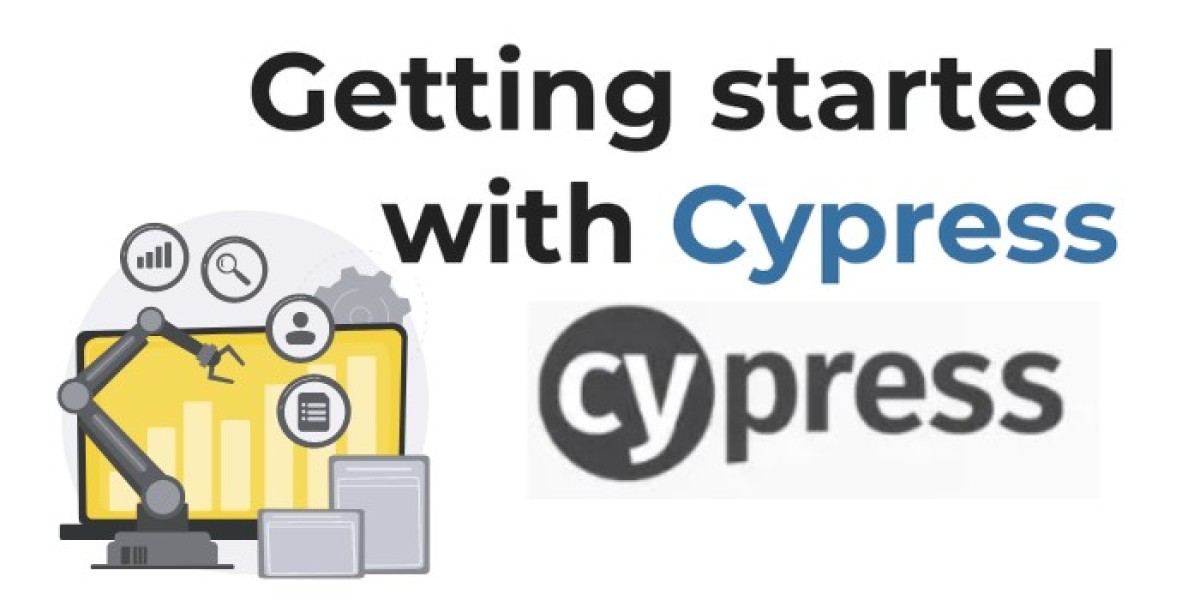Cypress has become a powerful and widely adopted automation tool in modern web development due to its ease of use, fast setup, and efficient testing capabilities. Whether you’re a developer or part of a testing automation company, Cypress offers a robust solution for end-to-end testing of web applications. In this guide, we will walk you through getting started with Cypress and cover essential best practices for web testing.
What is Cypress?
Cypress Automation Companies is a JavaScript-based testing framework designed for developers and QA engineers to write and run tests in the browser. Unlike traditional tools like Selenium, Cypress runs directly in the browser, offering real-time reloading, powerful debugging tools, and easy-to-understand test syntax. Cypress automation services are widely used for their ability to conduct fast and reliable tests without complicated setups.
Why Choose Cypress for Web Testing?
- Ease of Use: Cypress automation tools have a simple setup process, often completed with just one command. This makes it accessible for both new testers and experienced developers.
- Fast Test Execution: Unlike traditional tools, Cypress operates inside the browser, which results in faster test execution.
- Real-Time Reloading: With Cypress, you can instantly see the effect of changes in your tests, as it automatically reloads after every test run.
- Automatic Waiting: Cypress automatically waits for elements to become visible or for XHR requests to complete, eliminating the need for explicit waits in most test cases.
Key Features of Cypress
- Time Travel: Cypress takes snapshots of every step in your test, enabling you to go back in time to review test results and interactions.
- Network Traffic Control: Cypress allows you to stub and spy on network requests, making it easier to test complex web applications.
- Real-Time Execution: Tests are executed in real-time as they run inside the browser, allowing testers to see exactly what is happening at each stage.
- Automatic Waiting: Cypress automatically waits for elements to load, reducing the need for manual waits, which simplifies your test scripts.
Installation and Setup
- Install Node.js: Cypress is built on Node.js, so ensure you have it installed.
- Install Cypress: You can easily install Cypress by running the command:

3. Open Cypress: After installation, you can open Cypress by running:

This will open the Cypress Test Runner, where you can create your first test.
Writing Your First Cypress Test
Let’s write a simple Cypress test to demonstrate its ease of use.

Cypress Best Practices for Web Testing
While Cypress makes it easy to get started, following best practices ensures that your tests remain maintainable, readable, and scalable as your test suite grows. Here are some best practices to consider when using Cypress:
1. Keep Tests Isolated
Each test should be independent and not depend on the outcome of previous tests. Isolating tests ensures that a failure in one test does not cascade and affect other tests.
2. Use Page Object Model (POM)
The Page Object Model (POM) is a design pattern that enhances test maintainability by separating test logic from UI actions. It allows you to define page elements and their interactions in reusable methods, making it easier to manage changes to the UI.
3. Leverage Cypress Commands
Cypress allows you to define custom commands. Reusing custom commands across tests can simplify your test code and reduce duplication. Use Cypress.Commands.add() to create reusable commands that can be accessed globally.
4. Avoid Hardcoding Waits
Cypress automatically waits for commands and assertions to pass. However, some developers tend to add manual cy.wait() commands. Instead, use Cypress' built-in waiting mechanisms to avoid hardcoding wait times, which can slow down your tests and lead to flaky results.
5. Test Only What’s Necessary
Avoid writing overly complex tests that validate too many features in one run. Instead, focus each test on a single function or flow. This approach not only makes your tests easier to maintain but also speeds up the overall execution time.
6. Utilize Cypress Dashboard
Cypress offers a Dashboard Service, which helps you manage, track, and debug test runs. The Dashboard provides real-time insights, historical data, and video recording of test runs to improve visibility across your test suite. This feature is particularly helpful for testing automation companies managing large-scale projects.
Integrating Cypress into CI/CD Pipelines
Continuous Integration (CI) and Continuous Deployment (CD) pipelines are critical to modern development workflows, and Cypress integrates seamlessly with various CI platforms. Whether you’re using Jenkins, CircleCI, GitLab CI, or any other tool, Cypress can easily be added to run tests automatically as part of your build process.
Here’s how to add Cypress to a simple CI pipeline using GitHub Actions:

This example shows how easy it is to automate Cypress tests as part of your CI pipeline. You can also configure parallel test runs to speed up testing across multiple environments.
Common Challenges and Solutions in Cypress
- Handling Flaky Tests: Flaky tests can be frustrating. Ensure that you rely on Cypress’ automatic waiting and avoid using manual waits (
cy.wait()). Always try to write deterministic tests that give consistent results. - Cross-Browser Testing: Cypress has added support for multiple browsers, but if you require extensive cross-browser testing across older browsers, you may need to combine Cypress with other tools like Selenium.
- Dealing with Authentication: When testing applications that require authentication, you can bypass the login process using API requests to generate tokens or session cookies, significantly speeding up your tests.
Conclusion
Cypress is a powerful and developer-friendly testing tool that makes writing, running, and maintaining web tests easy. Its real-time feedback, automatic waiting, and integrated development environment make it a great choice for modern web applications. Whether you are a small team or part of a larger test automation company, Cypress automation services can help you improve your testing efficiency and ensure a smooth user experience for your web application.
By following best practices and leveraging Cypress’ powerful features, you can build a maintainable, scalable, and efficient test suite that ensures your web application is thoroughly tested and reliable.
Please feel free to email support@automationqa.co with any queries or comments.



